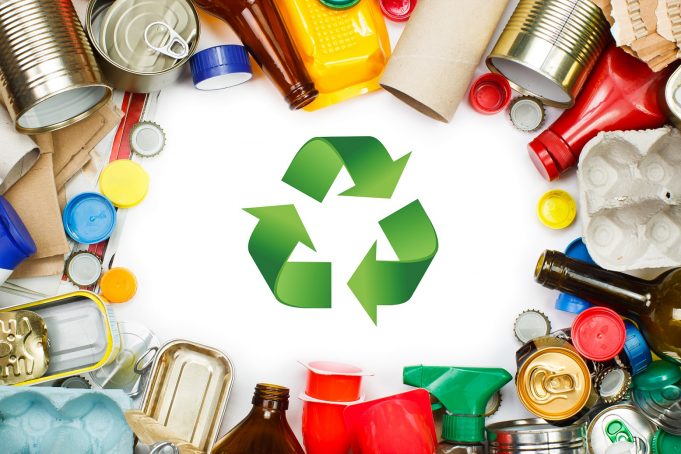Segregating Waste
(Recycling Part II)
In order for individuals and society to reap the benefits of recycling and sustain an impact in the long term, multiple links of the system need to connect. First things first, it is important to gain a fundamental understanding of how waste is collected in your locality and what is expected of you in order for this system to function. Secondly, scout your neighborhood to find a ‘raddiwala’ and get a feel of the various articles he will accept with or without pay.
Some tips on segregating the various forms of waste:
- Bio-waste
Consists of: organic materials waste like fruit, vegetables, meat and so on.
What to do: Bio waste needs to be disposed daily, and all municipalities will have a collection system in place for the same. Store the waste in a bin (without paper or plastic lining) so you can dispose it in its entirety and without hassle. Further, composting your bio waste is most desirable. Several municipalities, corporation offices and NGOs provide terracotta compost bins for domestic use. Do not ever feed your bio waste directly to plants as this will invite trouble by attracting rats, mice and bandicoots that are a major nuisance.
- Dry waste
Consists of: paper and plastic
While they might have independent collection schedules for the two, most municipalities will accept two categories of waste: bio or organic waste and dry waste.
What to do: In terms of method of disposal, dry waste can be further sub-categorized into clean and unclean. We tend to crush paper into balls before throwing it out. Don’t do this as the paper would then occupy comparatively more space as well as make recycling an avoidable challenge. Clean paper should be stacked and disposed every few days, while unclean or soiled paper (e.g., food packaging) needs to be folded neatly and put into your dry bin.
Clean plastic should be rinsed and added to the same bin. Other paper items such as newspapers, used paper, envelopes and invitations need to be stacked and sold once every few months, or as and when they mount up. These everyday items are commonly accepted by all raddiwalas. When stacking, ensure you do it size-wise; do not be hassled if you see your paper basket filling up. Go ahead and sell when it amounts to a substantial quantity; this makes your radhiwala’s life easier and the bulk will help you get a better price.
- Medical waste
Consists of: tablet foils, blood-soaked cotton, used syringes, used band-aids and so on
What to do: You will need a separate section or bin for medical waste to be collected over time, as it is unlikely for you to have large amounts of it on a regular basis. Collect your medical waste independently; once it has reached a certain bulk, you can request a local clinic or hospital to help you dispose it as they would have existing systems in place for that very purpose. If you are disposing it along with your regular dry waste to the municipality, ensure that blood-soaked cotton and sanitary pads are wrapped in paper and marked by a large, visible cross (red or black).
Tablets that you do not require but are within their expiry date can be donated to your local clinic or hospital. If you live in a household that happens to generate more advanced medical waste, consider using the local hospital or clinic to help you responsibly dispose the same.
- Sanitary waste
Consists of: used sanitary napkins, tampons, condoms
What to do: Wrap such waste in a couple of layers of newspaper and mark it with a visible cross in red or black. Dispose this separately but on a dry waste day. Never, ever flush pads or tampons down the commode; this is highly irresponsible waste (mis)management.
- Metal waste
Consists of: spare parts, nuts, bolts, screws and so on.
What to do: Your raddiwala will be more than happy to accept and pay for metal waste. However, you must be extra careful, and keep in mind that metal always has an afterlife and can be put to multiple uses by the right hands and techniques.
- Electronic waste
Consists of: electric and electronic appliances – in part or whole
What to do: Electronic waste is one of the fastest growing and most hazardous types of waste. You certainly will not have sufficient amounts to be able to dispose it off on a regular basis so stack and collect your e-waste over time, identify drop-off bins in your area and dispose electronic waste responsibly.
- Glass
Consists of: broken glass, alcohol, medicine bottles, cosmetic bottles and so on
What to do: Glass is best disposed of by selling to your neighborhood ‘raddiwala’. Your local municipality collector may not separate it from other waste, which means it will end up in a landfill or is bound to hurt someone in the waste management chain. Even if the raddiwala does not give you a good price, it is still the most responsible way to dispose glass.
- Hard plastic
Consists of: empty shampoo containers, floor cleaner dispensers and so on.
What to do: These items need to be collected over time, and disposed infrequently. Once this pile has amounted to a substantial amount, go ahead and sell or give it to a raddiwala.
















































